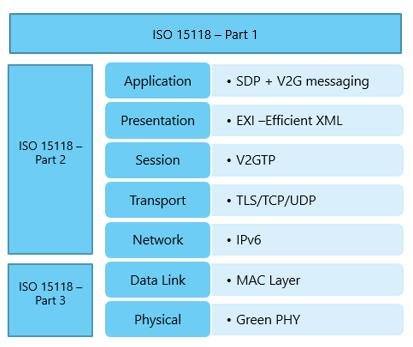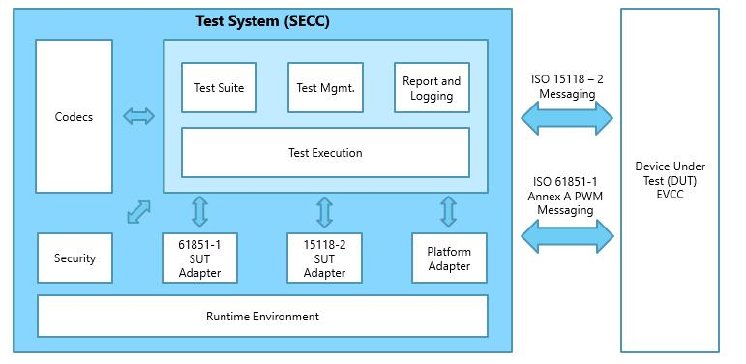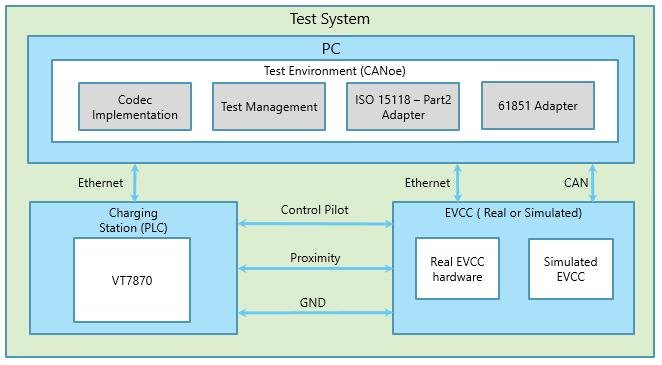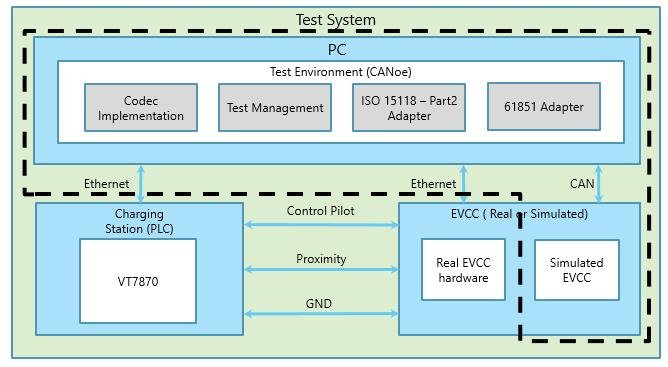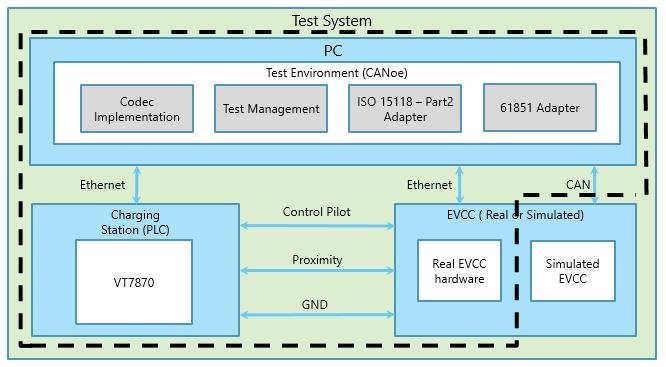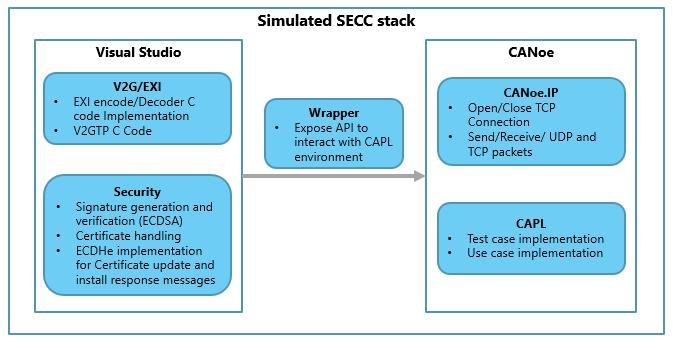ISO 15118: Road Vehicles – Vehicle to Grid Communication Interface
The ISO 15118 Standard is divided into 5 parts as follows:
• ISO 15118-1 introduces the overall flow of communication.
• ISO 15118-2 deals with the requirements of messages exchanged by EV and EVSE
• ISO 15118-3 consists of physical and data link layer requirements
• ISO 15118-4 includes the conformance tests for ISO 15118-2
• ISO 15118-5 consists of the conformance tests for ISO 15118-3
The remaining parts of the standard deal with wireless communication.
ISO15118 part 1 defines the general requirements and use cases. ISO15118 Part 2 standard provides the requirements for the top 5 layers of the Open System Interconnection (OSI) model viz. Application Layer, Presentation Layer, Session Layer, Transport Layer and Network Layer. The EV and EVSE communicate with each other over Power Line Communication (PLC). During the communication, EV and EVSE exchange various messages over IPV6 UDP/TCP Protocols. These messages have been described in ISO 15118 Part 2. The Data Link Layer and Physical Layer functionality is described in ISO 15118-3.
ISO 15118 Part 4: Conformance Test- Concept
The Generic test architecture reference model defined by ISO15118 –Part4 is as follows:
These test cases are only applicable for communication protocol defined in part 2 of the ISO15118 standard and do not consider any power flow between EV and EVSE. The conformance test cases in part 4 are specified for OSI network layer 3 and above.
ISO 15118 Part 4: Test Architecture System
KPIT has developed a generic test framework for ISO15118-Part4 conformance testing and a simulated EVSE stack using CANoe and VT system from Vector. The reference architecture mentioned in section 3 was mapped as mentioned below.
A completely simulated EVSE stack has been developed according to Part 2 of the standard. The stack has been developed in the following way:
• Codec: Efficient XML Interchange (EXI) Encoder/Decoder implementation.
• Codec: CANoe.IP was used for IPv6/UDP and TCP.
• ISO15118 Part2 Adapter: Supply Equipment Commnication Controller (SECC) timers and message handlers.
• ISO61851 Adapter: Application programming Interface (API) to control the SECC side control pilot circuit.
• Test Management: Implementation of CAPL unit test module for use cases and test cases.
• Creation of wrapper Dynamic Link Library (DLL) – Message API has been exposed as wrapper function to read and write data from CAPL.
The below mentioned network architecture along with Graphical User Interface (GUI) was used for conformance testing. A complete test module to test whether the EV meets the ISO 15118 – 2 standard has been implemented. This consists of the all the 197 ISO 15118-4 Conformance Tests.
ISO 15118 Part 4: Network Architecture and GUI
Security
OpenSSL libraries have been used for the following:
• Use of OpenSSL API for signature generation and verification using Elliptic Curve Digital Signature Algorithm (ECDSA) algorithm
• Use of OpenSSL API to generate the shared secret key using Elliptic-curve Diffie-Hellman (ECDH) algorithm. • Implementation of Concatenation hash based Key derivation function (KDF) algorithm.
• Use of OpenSSL AES128_CBC API to encrypt the private key of Contract certificates.
• Use of OpenSSL API’s to read the X509 certificates.
• Use of OpenSSL API for hashing using Secure Hash Algorithm (SHA256).
Summary
The Conformance test suite developed by KPIT using industry standard tools is easy to use and can be easily customized or extended to include additional test cases apart from the ones mentioned in the standard. It also ensures that the communication between EV and EVSE is according to the protocol mentioned in the standard and ensures that the EV is interoperable with independent implementations of EVSE.
